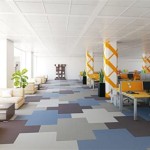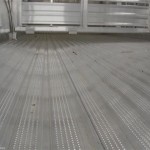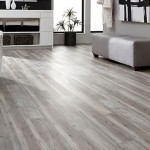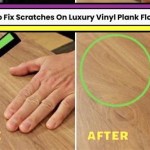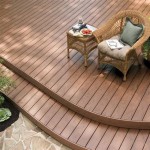Exposed Aggregate Flooring: A Comprehensive Overview
Exposed aggregate flooring represents a durable and aesthetically versatile option for both interior and exterior surfaces. This flooring type is characterized by the intentional display of decorative aggregates, such as pebbles, stones, shells, or glass, embedded within a concrete matrix. The process involves removing the top layer of cement paste to reveal the underlying aggregate, creating a textured and visually appealing finish.
The popularity of exposed aggregate flooring stems from its blend of functionality and design flexibility. It provides a slip-resistant surface suitable for areas prone to moisture, while its customizable nature allows for a wide range of aesthetic possibilities. From driveways and patios to pool decks and interior floors, exposed aggregate flooring offers a durable and attractive solution for diverse applications.
The installation and maintenance of exposed aggregate flooring require a thorough understanding of the materials and techniques involved. Proper preparation, mixing, placement, and finishing are crucial to achieving a long-lasting and visually pleasing result. Understanding the different types of aggregates, concrete mixes, and finishing methods is essential for successful implementation.
Durability and Longevity of Exposed Aggregate Flooring
One of the primary advantages of exposed aggregate flooring is its inherent durability. The embedded aggregates, typically strong and resistant materials like granite, quartz, or basalt, contribute significantly to the overall strength and resilience of the surface. This makes exposed aggregate flooring highly resistant to wear and tear, impact damage, and abrasion, particularly in high-traffic areas.
The concrete matrix that binds the aggregates together also plays a vital role in the flooring's durability. The concrete mix design, including the water-to-cement ratio, aggregate size and gradation, and the addition of admixtures, directly impacts the strength and density of the concrete. A properly formulated and installed concrete mix will resist cracking, crumbling, and other forms of degradation, ensuring a long lifespan for the flooring.
Furthermore, the exposed aggregate surface provides excellent slip resistance, making it a safe option for areas prone to moisture, such as pool decks, patios, and walkways. The textured surface created by the exposed aggregates offers increased traction, reducing the risk of slips and falls, even when wet. This inherent safety feature makes exposed aggregate flooring a preferred choice in both residential and commercial settings.
The longevity of exposed aggregate flooring is also influenced by proper maintenance. Regular cleaning to remove dirt, debris, and stains is essential to preserving its appearance and preventing surface damage. Sealing the surface with a high-quality concrete sealer can further enhance its durability and resistance to weathering, staining, and chemical attack. Regular sealing helps to prevent water penetration and the formation of efflorescence, a white powdery deposit that can detract from the flooring's appearance.
Freeze-thaw cycles can significantly impact the lifespan of concrete surfaces, including exposed aggregate flooring, particularly in colder climates. Water that penetrates the concrete can freeze and expand, causing cracks and spalling. To mitigate this risk, it is essential to use air-entrained concrete, which contains microscopic air bubbles that provide space for water to expand during freezing. Proper drainage and the application of de-icing salts specifically formulated for concrete can also help to protect the flooring from freeze-thaw damage.
Aesthetic Versatility and Design Options
Exposed aggregate flooring offers a wide range of aesthetic possibilities, making it a highly versatile design choice. The type, size, color, and shape of the aggregates used can be customized to achieve a desired look, from natural and rustic to modern and sophisticated. The color of the concrete matrix can also be adjusted by adding pigments or dyes to create a cohesive and visually appealing surface.
The choice of aggregate is a key factor in determining the overall appearance of the flooring. Natural aggregates, such as pebbles, stones, and shells, offer a timeless and organic look, blending seamlessly with outdoor environments. Manufactured aggregates, such as glass, recycled concrete, or ceramic chips, provide a more contemporary and unique aesthetic. The size and shape of the aggregates can also be varied to create different textures and patterns. Larger aggregates create a more heavily textured surface, while smaller aggregates provide a smoother and more refined appearance.
The color of the concrete matrix can be altered by adding pigments or dyes to the concrete mix. This allows for the creation of a wide range of color schemes, from subtle earth tones to bold and vibrant hues. Integrally colored concrete provides a uniform and long-lasting color that will not fade or wear away over time. Staining the concrete after the aggregate is exposed is another option for adding color, but this method may require more frequent maintenance and reapplication.
The finishing process also plays a significant role in the final appearance of the flooring. Different techniques can be used to expose the aggregates to varying degrees, creating different textures and levels of reflectivity. Lightly exposing the aggregates results in a smoother surface with a more subtle texture, while deeper exposure reveals more of the aggregate, creating a more pronounced and rustic look. Polishing the surface after exposure can create a smooth and glossy finish that enhances the color and reflectivity of the aggregates.
Beyond the choice of aggregates and concrete color, other design elements can be incorporated into exposed aggregate flooring. Decorative saw cuts can be used to create patterns, borders, or inlays. Stencils and templates can be used to add intricate designs or logos to the surface. Combining exposed aggregate with other flooring materials, such as pavers, tiles, or brick, can create visually interesting and dynamic spaces.
Installation and Maintenance Considerations
The successful installation of exposed aggregate flooring requires careful planning and execution. Proper site preparation, concrete mixing, placement, and finishing are essential to achieving a durable and aesthetically pleasing result. Hiring experienced contractors who are familiar with exposed aggregate techniques is highly recommended.
Site preparation is a critical first step. The subgrade should be properly compacted and graded to ensure adequate drainage and prevent settling. A stable and level subgrade is essential for preventing cracks and unevenness in the finished flooring. A reinforcing mesh or rebar should be installed to provide additional strength and prevent cracking.
The concrete mix design is crucial for the performance and appearance of the flooring. The water-to-cement ratio, aggregate size and gradation, and the addition of admixtures should be carefully selected based on the specific application and environmental conditions. Using a high-quality concrete mix with appropriate additives will ensure the durability, strength, and workability of the concrete.
Proper concrete placement and finishing techniques are essential for achieving a uniform and aesthetically pleasing surface. The concrete should be placed evenly and consolidated to eliminate air pockets and voids. The surface should be leveled and screeded to create a smooth and consistent finish. The timing of the aggregate exposure is critical. The top layer of cement paste must be removed at the right time to reveal the aggregates without damaging them. Various methods can be used for aggregate exposure, including brushing, washing, or using chemical retarders.
Once the aggregates are exposed, the surface should be thoroughly cleaned to remove any remaining cement paste or debris. The flooring should then be sealed with a high-quality concrete sealer to protect it from staining, weathering, and chemical attack. Regular maintenance is essential for preserving the appearance and durability of exposed aggregate flooring. Regular cleaning to remove dirt, debris, and stains is necessary. The frequency of cleaning will depend on the level of traffic and the environmental conditions. The sealer should be reapplied periodically, typically every one to three years, to maintain its protective properties. Following these installation and maintenance guidelines will ensure that exposed aggregate flooring provides a durable, attractive, and long-lasting surface for many years.

5 Things About Exposed Aggregate Concrete Floor Renucrete

What Are Exposed Aggregate Polished Concrete Floors

How To Patch Exposed Aggregate Concrete

How To Achieve Success On Polished Concrete Exposed Aggregate Floors For Construction Pros

Pros And Cons Everything You Need To Know About Exposed Aggregate

Concrete Flooring Exposed Aggregate Flash Residential Tertiary Other Formats

Exposed Aggregate Concrete Advantages Garage Floor Coating Of Mn

Polished Concrete Floors Exposed Aggregate By Glossy

Exposed Aggregate Concrete Advantages Garage Floor Coating Of Mn

Benefits Of Exposed Aggregate Flooring Fluid Concrete
Related Posts

